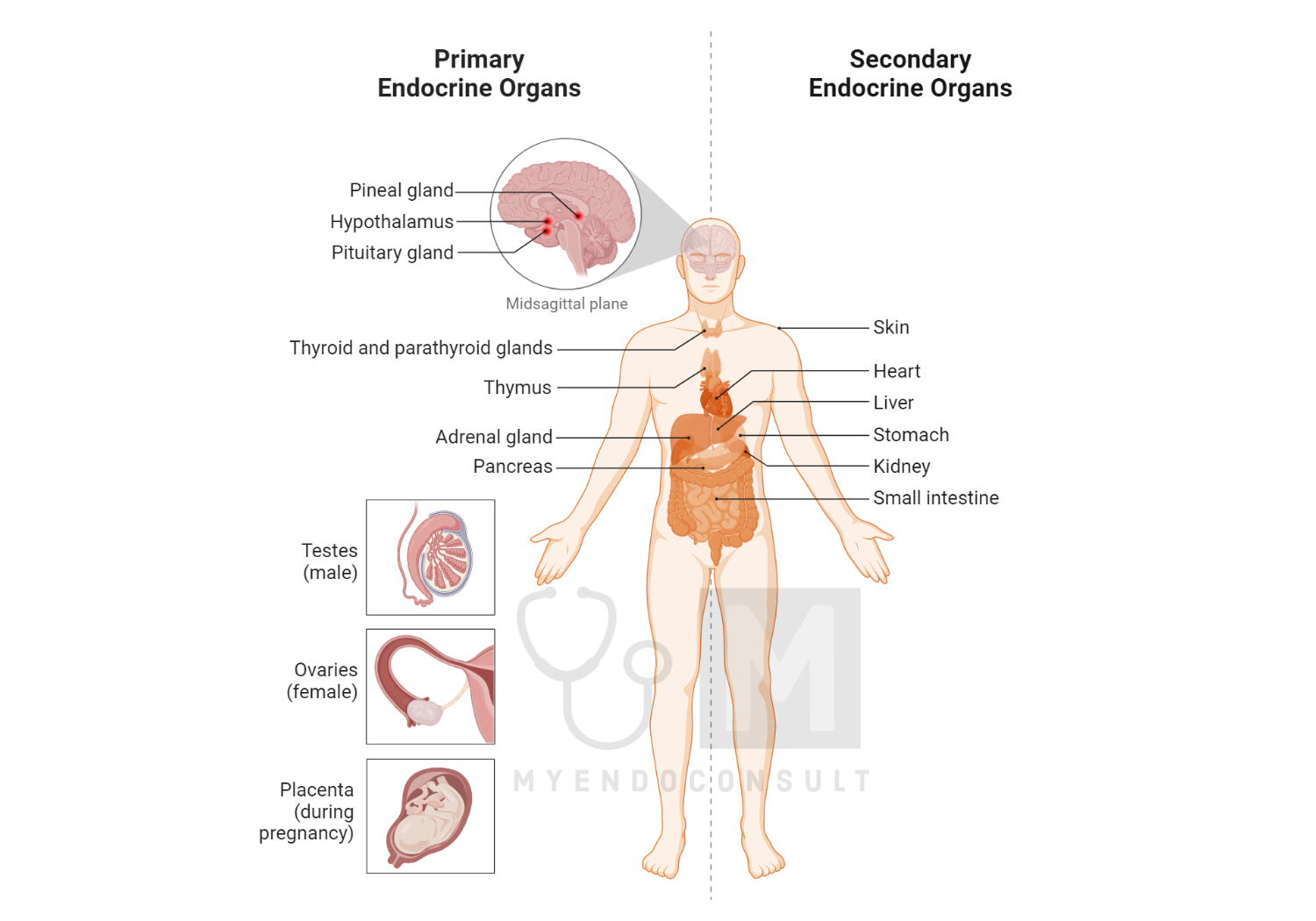An endocrine gland, or tissue, is generally described as a collection of cells that produce a chemical substance which is then discharged into the surrounding medium, most often into the bloodstream. This group of cells is equipped with distinct intracellular mechanisms that facilitate the expulsion of synthesized molecules into the nearby medium, typically blood. This contrasts with exocrine glands, like the salivary gland or pancreas, which excrete substances into a duct that leads to the mouth and gastrointestinal tract, respectively.
Although our understanding of endocrine glands has expanded over time, many still don’t entirely conform to this standard description. In fact, many of these glands are renowned for other physiological activities. Modern categorization of endocrine glands now considers various categories.
Classic Endocrine Glands
Among the ‘classic’ endocrine glands are well-defined glands recognized for their endocrine functionality. This category includes the gonads, thyroid, adrenals, parathyroids, pancreatic islets of Langerhans, and the pituitary gland. Each of these glands produces one or more unique hormones. However, only those glands that produce amino acid-derived hormones (like amine, polypeptide, and protein) would contain secretory granules.
In 1909, the term “hormone” was first used by two physiologists, William Bayliss, and Ernest Starling, to describe a molecule called secretin, produced by the gastrointestinal tract. This large organ not only plays a critical role in digestion and absorption but also generates numerous hormones. While several of these hormones primarily affect the gastrointestinal system, some have more widespread influences, including on the central nervous system (CNS). Current endocrinological research is particularly interested in these hormones due to their potential role in regulating food intake, hunger, and appetite.
The central nervous system plays a pivotal role in the endocrine system. The hypothalamus, a part of the brain, has a well-defined endocrine function. It releases molecules from nerve endings into a specific blood portal system connecting it to the anterior pituitary or the general circulation through the posterior pituitary. It is suggested that other sections of the brain might also produce molecules that could be secreted into brain fluids like the intracerebroventricular (icv) or general brain extravascular fluids. The dendritic release of known hormone molecules into the icv fluid in the third ventricle has raised possibilities of different parts of the brain communicating via a fluid different from blood.
Another fascinating organ within the brain with a distinct endocrine function is the pineal gland. This gland has an interesting connection to the eyes via an afferent nerve pathway. In Hinduism and Buddhism, it’s known as the third (or inner) eye and symbolizes enlightenment. The pineal gland produces melatonin, a hormone that regulates several functions related to the internal circadian ‘clock’ located in the suprachiasmatic nucleus in the hypothalamus. Melatonin production increases during the night and is suppressed by daylight.
The placenta, a tissue with crucial reproductive functions, also has a significant endocrine role. During pregnancy, the placenta, in conjunction with the developing fetus, produces many hormones. Therefore, the combined endocrine tissue is often referred to as the fetoplacental unit.

Learn more about the traditional endocrine glands
Hypothalamus and Pituitary gland
Gonads
Nontraditional endocrine tissues
In recent times, it has been discovered that tissues generally known for other physiological roles also possess endocrine functions. These include the liver, kidneys, heart, blood, and adipose tissue. Additionally, immune tissues such as lymphoid tissue produce molecules that have ‘endocrine’ effects on distant target cells.
Endocrine gland cells produce molecules for release into the general circulation as a result of the integration of various signals reaching these cells. These cells are continually receiving an array of signals, some stimulatory and others inhibitory.
The process by which individual endocrine cells interpret and act upon these diverse signals is a facet of endocrinology that is only now starting to be understood.
Kindly Let Us Know If This Was helpful? Thank You!


